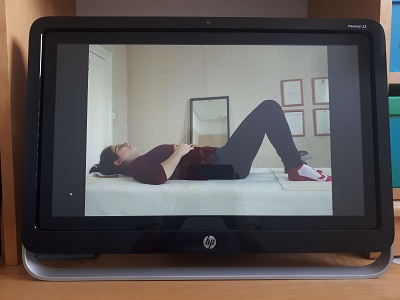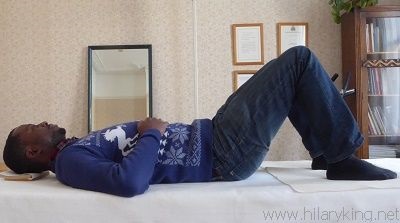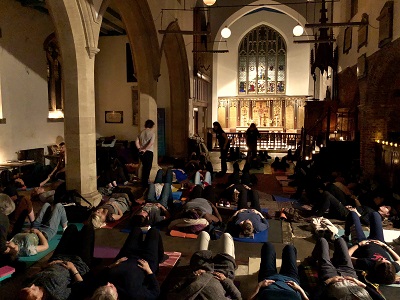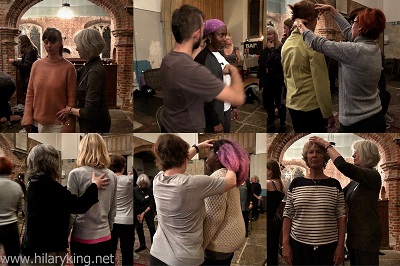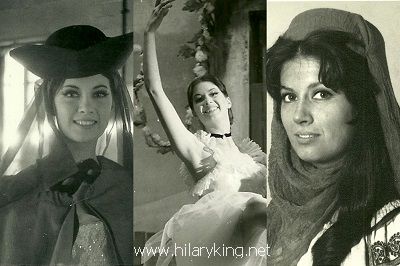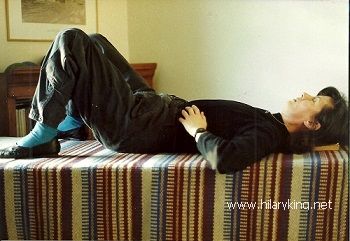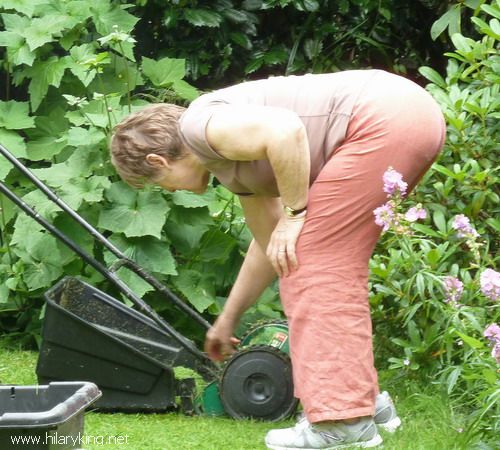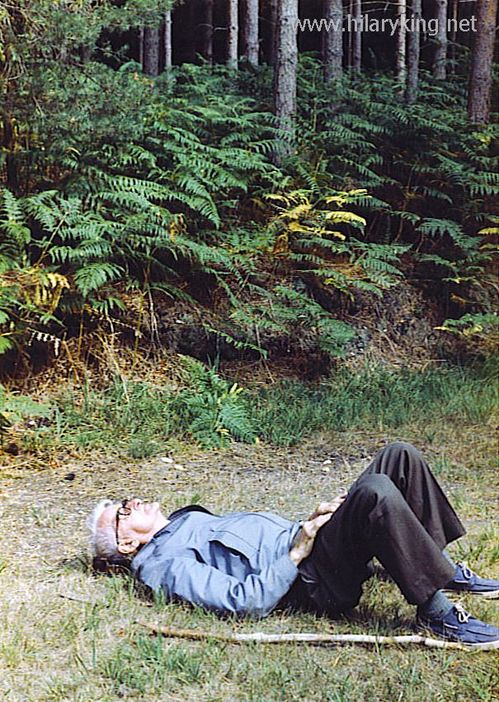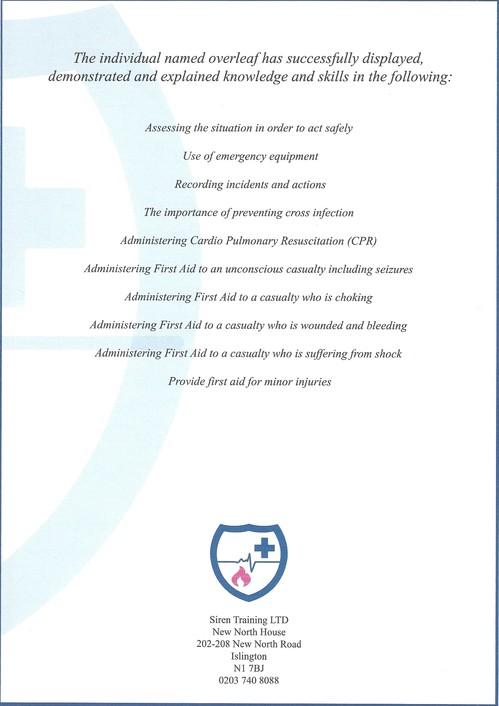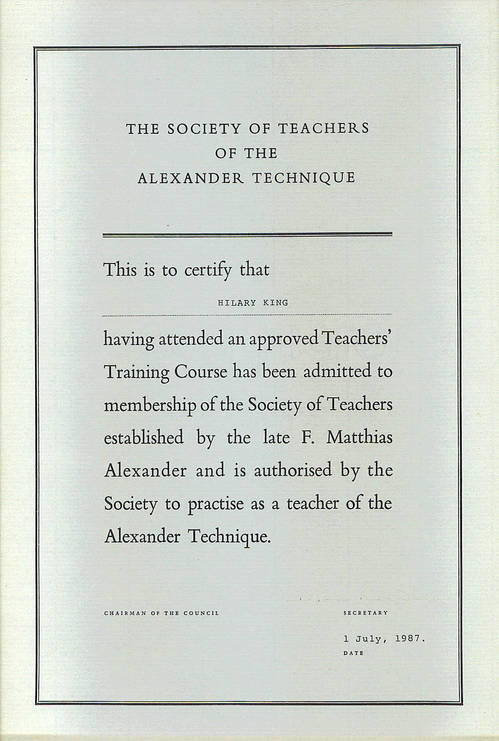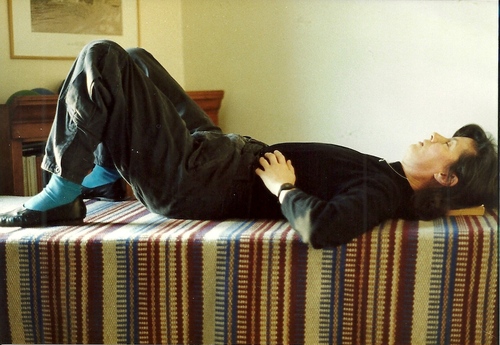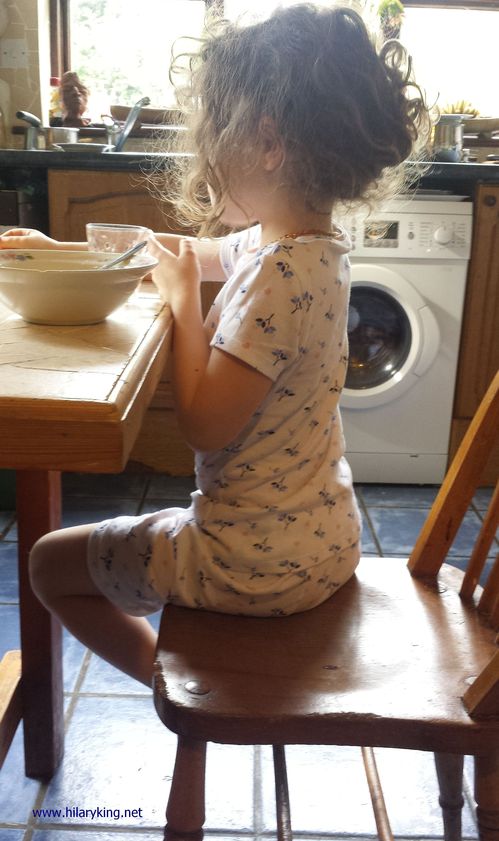Don’t Pull Your Stomach in!
There is an interesting article in The Conversation explaining in detail why the habit of pulling your stomach in can harm you. Alexander teachers are always encouraging people not to do this, as it creates an imbalance in your musculature. The image from Cleveland Clinic below shows a visible fold in the abdominal muscles which can develop as a result of continually ‘Stomach gripping’ and this is called ‘Hourglass syndrome’ .
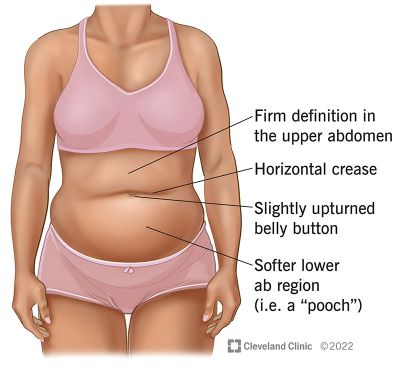
Habitually pulling your stomach in results in ‘Hourglass syndrome’.
Pulling Your Stomach in Can Harm You
Why do people pull in their stomach in the first place? Some people will contract their bellies involuntarily because they are in pain, for instance with period pain or after surgery. Anxious people often react to stress by unconsciously gripping their belly muscles, which makes them breathe very shallowly. Many other people pull their stomachs in consciously, and eventually habitually, in order to look slimmer. However, this imbalances your musculature and interferes with the way your body functions – and it damages you.
We all, particularly women and girls, receive strong messages to ‘pull your stomach in’ from friends and family plus we are bombarded by social media, because it is fashionable to have a flat belly. Perhaps it would help us if curvy Rubenesque figures came back into fashion again! It is healthier not to build fat up on your belly, but that is another discussion.
‘Pull your stomach in’ was certainly a message I was given even when I was small and I heard it constantly whilst training to be a ballet dancer. That was before all the social media pressures of today that bombard and influence people. Without careful explanations as to how to look after our musculature, this habitual ‘Stomach gripping’ just distorts muscle use, rather than creating a flat belly. The muscles of the upper abdomen gradually become gripped, tense and hypertonic, whilst the muscles in the lower region of your abdomen become more flaccid. The opposite to the outcome you hoped for!
What happens when you pull your stomach in tight?
Each time you force your stomach in, you increase the intraabdominal pressure and this pushes your stomach and your lungs up into your ribcage. So you can see how this habitual stomach gripping impacts on your internal organs. Habitually pulling your stomach in can harm you and creates the Hourglass Syndrome. This interferes with the function of your diaphragm and makes it pull up and inwards, lifting the ribs too high. Dr. Browning at Cleveland Clinic states that this distorted pattern restricts breathing by as much as 30%. Instead, we want to allow the diaphragm to expand downwards with the ribs free to ease outwards, including around our back and sides.
Habitually pulling your stomach in tightly can also result in lower back pain and pelvic floor problems. As the ribs are forced to move in a distorted and restricted way, this impacts on the muscles in the rest of you torso and your overall body use. Your back, shoulders and neck can become painful as they are made to work too hard, trying to correct the imbalance in muscle use. The lower back can often become overarched and painful. Also, your pelvic floor can become weaker with sometimes embarrassing consequences. Do you really want to do that to yourself?
How often do you tell yourself to Pull Your Stomach In?
How do you feel about your belly? Do you actually notice how many times a day you grip your stomach muscles? Are you aware of the triggers that get you feeling the need to suck your stomach in and when, why did they start? Answering these questions will help you to understand your habits. See if you can do this without blaming yourself – our habits started for what seemed like a good reason at the time. When you are aware of your habits, then you have a chance to let go of them.
Noticing our habits is the first step towards being able to let go of them.
Once we can avoid the habit of continually creating abdominal tension, we can then allow ourselves to do something different. When we allow our abdominal muscles to be easy, our breathing will become freer and deeper, our body will become more poised, balanced and coordinated. For instance, if the lower back overarches, this pushes the belly further forwards, so there is amore temptation to pull the stomach in. However, allowing the pelvis and coccyx to drop down a little instead, so the back can ease and lengthen, will enable the belly to drop back in towards the bowl of the pelvis. This eases the back and reduces the apparent size of the stomach. Try it. Then you want to avoid clenching your stomach and arching your lower back again.
Once you have found an easier and more balanced way of being, it may then be helpful to explore strengthening underused muscles – carefully, with guidance.
As F M Alexander realised, our body use affects our functioning. Habitual tension interferes with the way our body wants to work, so it is worth exploring how to let yourself change. Alexander lessons offer you a good way to understand this process and can help you let go of harmful habits, regain an easy poise and to feel more comfortable in your own body.
